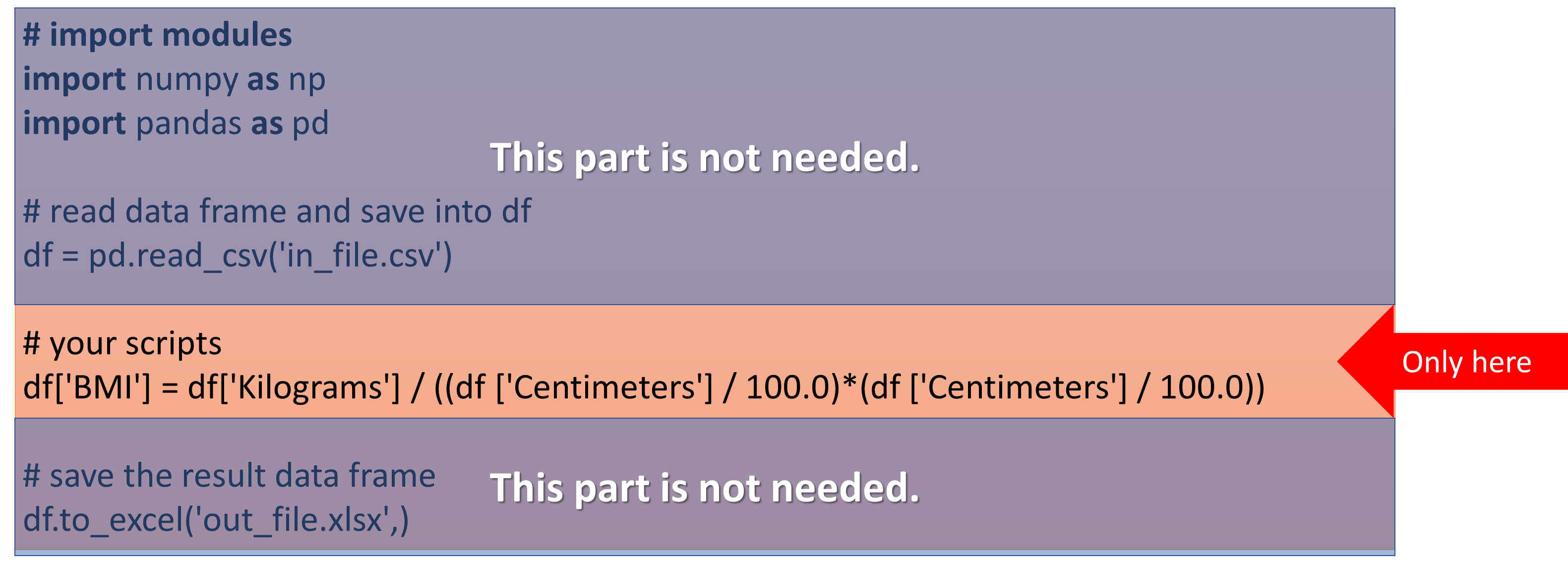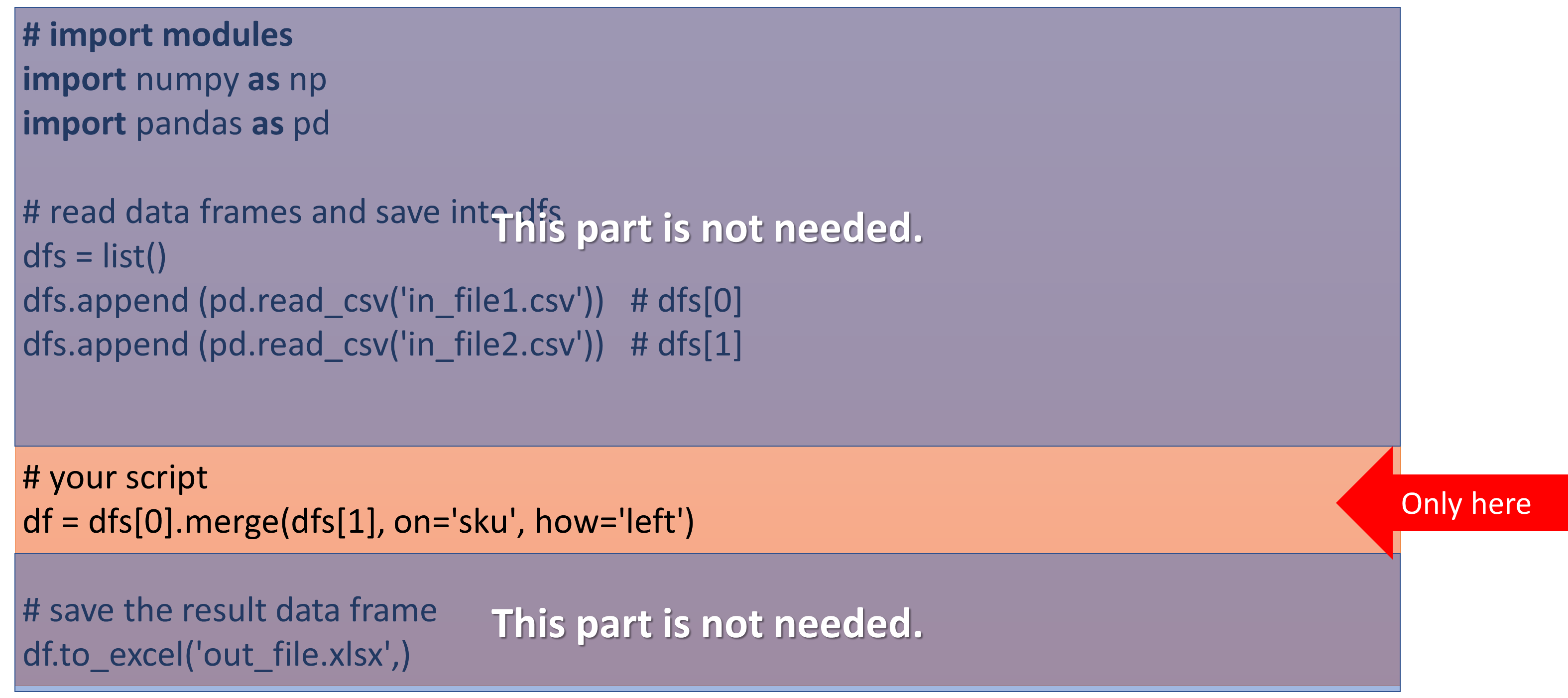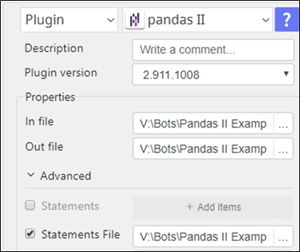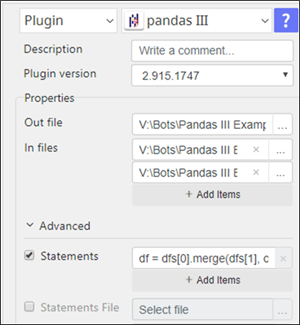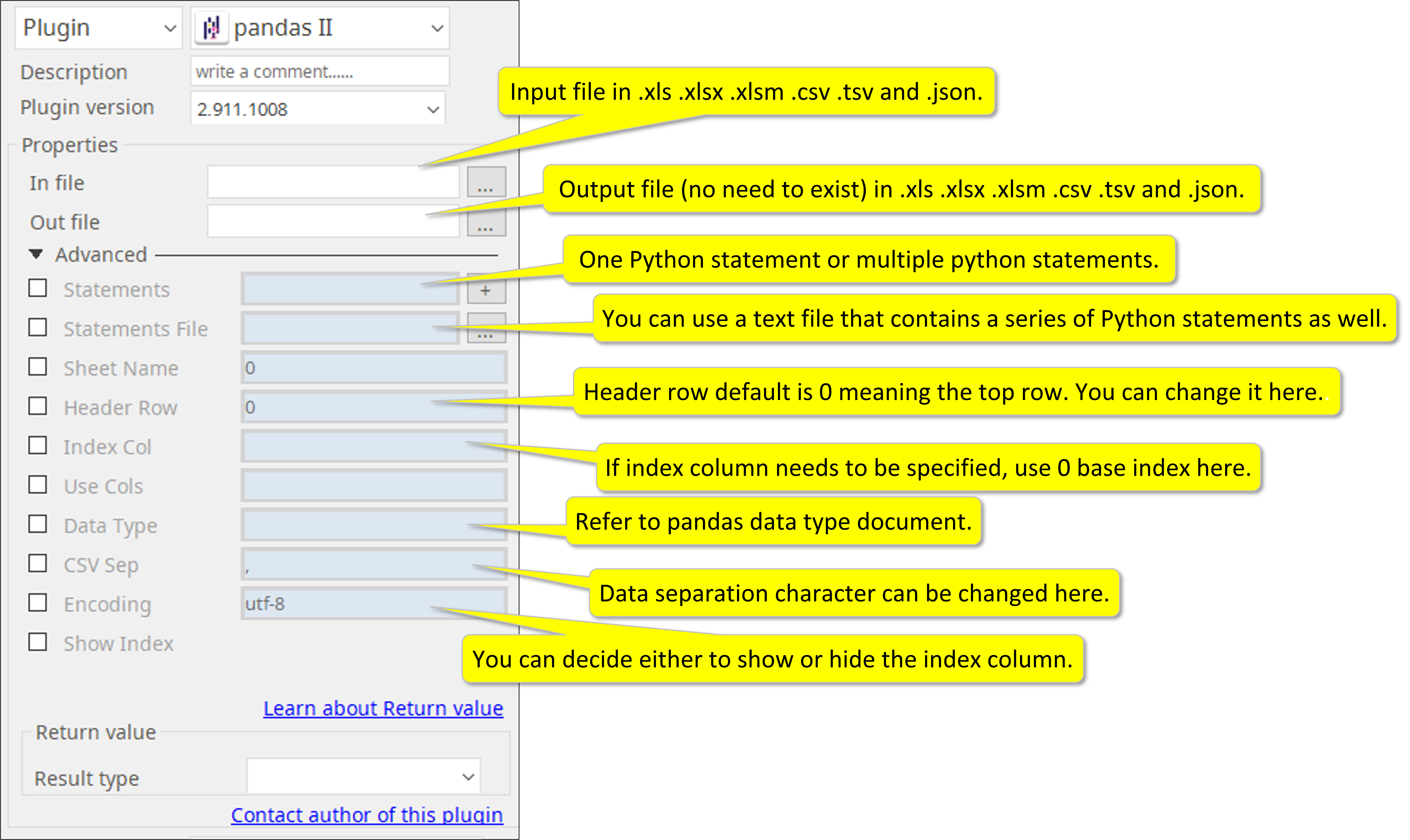pandas II-2.911.1008
Update 2021.03.11
You only need the BODY part of your pandas statements to drive the pandas-II and -III plugins.
The pandas-II and -III plugins have integrated the importing, reading, and the saving parts, you only need the body part of your statements. For example, when your pandas statements look like below you only need one line in the pandas-II and -III plugins.
For pandas-II
For pandas-III
Update 2021.02.22
Sample Statements and Use of “df” and “dfs” variables
1. You must use “df” and “dfs” as variables for data-frames
a. As variable for the dataframes with the Python statements in pandas II and III plugins, it is required to use "df" and "dfs" to represent dataframes (all in small cases).
b. As for pandas III, the multiple dataframes ("dfs“) will take [n] as index (it is zero based as the first set of dataframe becomes dfs[0]) as shown in examples below.
2. For pandas II Statements
a. The “In file” will be the data frame stored at "df" Python variable
b. All pandas functionality is working with "df" data frame including Reshaping at statements File
c. Processed results of statement’s execution will continue to be stored in the same "df“ variable and eventually be the “Out file”
3. pandas II Statements Example
- df['BMI'] = df['Kilograms'] / ((df ['Centimeters'] / 100.0)*(df ['Centimeters'] / 100.0))
- df = df.sort_values('BMI', ascending=False)
- df = df.sort_values('BMI', ascending=False).groupby('Gender').head(5)
4. pandas III Statements
a. “In files” will be a data frame stored at "dfs[0]", "dfs[1]",... Python variable (zero base index)
b. All pandas functionality is working with "dfs[n]" data frames including merge
c. Processed results of statement’s execution will continue to be stored in the same "df“ variable and eventually be the “Out file”
5. pandas III Statements Example
- df = dfs[0].merge(dfs[1], on='sku', how='left')
Above Python represents the process illustrated below (just like vlookup feature in Excel)
------------------------------------------------------------------------------------------------------------------------------------------------------------------------------------------
Input, Output, Features, and Parameters.
Required Input
1. Input File: One data file (dataframe).
Supported input formats are .xlsm, .xls, xlsm, .csv, .tsv, and .json
2. Output File: One data file.
Supported input formats are .xlsm, .xls, xlsm, .csv, .tsv, and .json
Optional Input
3. Enter a Python statement, or multiple statements. Also a text file that contains a list of statements can be used as input.
4. When input file multiple sheets, you can select which sheet to be processed.
5. You can designate which row you can use as header (variable) for your processing.
6. You can specify a column to be used as the index of the dataframe.
7. You can specify which column(s) to be or not to be processed.
8. You can determine specific pandas datatypes for your column.
9. You can determine what character to use to separate your data (default is comma).
10. You can specify encoding technology of the input file (default is UTF-8).
11. You can select to either show or hide the index column in your output file.
How to set parameters
pandas-II plugin parameters are 100% compatible to pandas read_excel specifications
https://pandas.pydata.org/pandas-docs/stable/reference/api/pandas.read_excel.html
Please refer the parameters on the right in the pandas document above.
- Sheet Name →sheet_name
- Header Row →header
- Index Col →index_cols
- Use Col →usecols
- Data Type →dtypes

